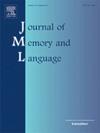法学硕士对人类如何归纳逻辑结构化规则进行建模
IF 3
1区 心理学
Q1 LINGUISTICS
引用次数: 0
摘要
认知科学的一个中心目标是为心智结构及其发展提供一种计算上的明确描述:认知的原始表征构建块是什么,这些基本要素结合的规则是什么,这些基本要素和规则最初来自哪里?一个长期存在的争论是关于人工神经网络是否足够作为可以回答这些问题的计算模型,特别是在与抽象认知功能相关的领域,如语言和逻辑。本文认为,神经网络的最新进展——特别是大型语言模型(llm)的出现——代表了这场辩论的一个重要转变。我们在一个现有的实验范式上测试了各种llm,该范式用于研究在逻辑概念上制定的规则的归纳。在四个实验中,我们发现越来越多的经验证据表明,法学硕士对人类行为的拟合程度至少与实现贝叶斯概率思维语言(pLoT)的模型一样好,后者是同一任务中人类行为的最佳计算模型。此外,我们表明,LLM对为了完成任务而推断和部署的规则的性质做出了定性不同的预测,这表明LLM不太可能仅仅是pLoT解决方案的实现。基于这些结果,我们认为法学硕士可以实例化解释人类逻辑概念所需的原始表示和计算的新颖理论说明,这是未来认知科学工作应该参与的。本文章由计算机程序翻译,如有差异,请以英文原文为准。
LLMs model how humans induce logically structured rules
A central goal of cognitive science is to provide a computationally explicit account of both the structure of the mind and its development: what are the primitive representational building blocks of cognition, what are the rules via which those primitives combine, and where do these primitives and rules come from in the first place? A long-standing debate concerns the adequacy of artificial neural networks as computational models that can answer these questions, in particular in domains related to abstract cognitive function, such as language and logic. This paper argues that recent advances in neural networks – specifically, the advent of large language models (LLMs) – represent an important shift in this debate. We test a variety of LLMs on an existing experimental paradigm used for studying the induction of rules formulated over logical concepts. Across four experiments, we find converging empirical evidence that LLMs provide at least as good a fit to human behavior as models that implement a Bayesian probabilistic language of thought (pLoT), which have been the best computational models of human behavior on the same task. Moreover, we show that the LLMs make qualitatively different predictions about the nature of the rules that are inferred and deployed in order to complete the task, indicating that the LLM is unlikely to be a mere implementation of the pLoT solution. Based on these results, we argue that LLMs may instantiate a novel theoretical account of the primitive representations and computations necessary to explain human logical concepts, with which future work in cognitive science should engage.
求助全文
通过发布文献求助,成功后即可免费获取论文全文。
去求助
来源期刊
CiteScore
8.70
自引率
14.00%
发文量
49
审稿时长
12.7 weeks
期刊介绍:
Articles in the Journal of Memory and Language contribute to the formulation of scientific issues and theories in the areas of memory, language comprehension and production, and cognitive processes. Special emphasis is given to research articles that provide new theoretical insights based on a carefully laid empirical foundation. The journal generally favors articles that provide multiple experiments. In addition, significant theoretical papers without new experimental findings may be published.
The Journal of Memory and Language is a valuable tool for cognitive scientists, including psychologists, linguists, and others interested in memory and learning, language, reading, and speech.
Research Areas include:
• Topics that illuminate aspects of memory or language processing
• Linguistics
• Neuropsychology.

 求助内容:
求助内容: 应助结果提醒方式:
应助结果提醒方式:


